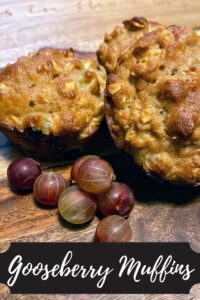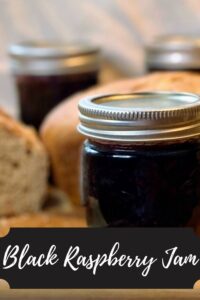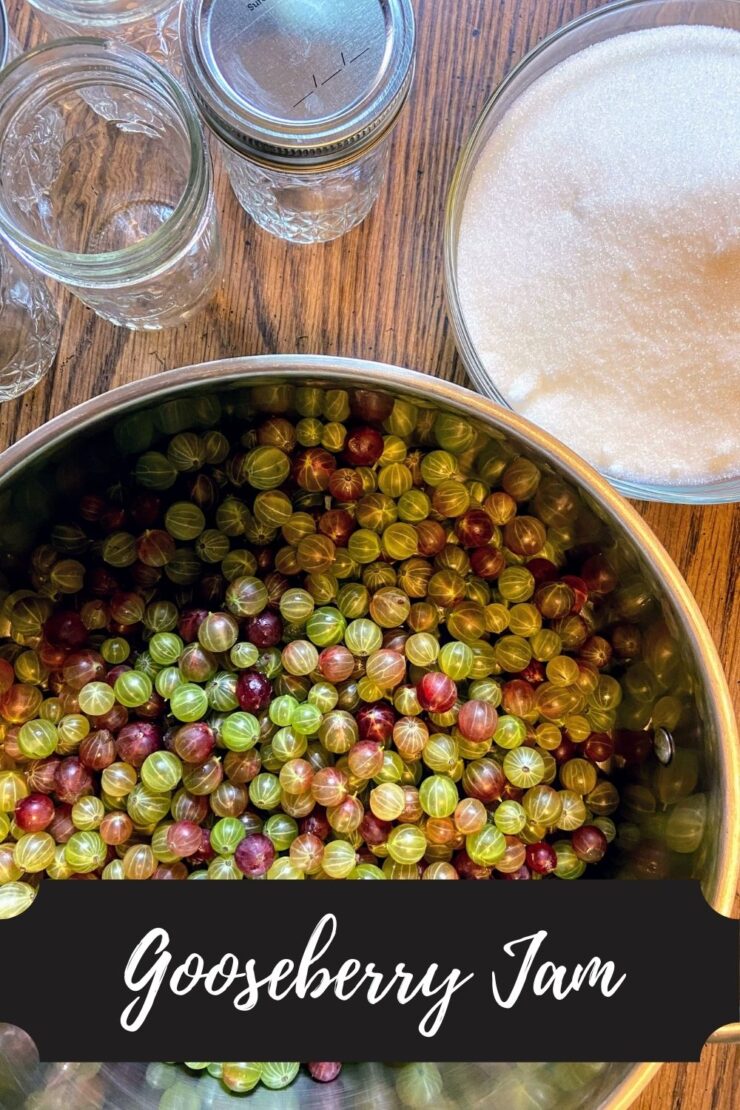I'm an affiliate
I hope you love the products I recommend! Just so you know, I may collect a share of sales or other compensation from the links on this page. If you use the links, thank you for supporting me! I really appreciate it!
Last Updated on July 10, 2023 by Jess
My journey to gooseberry jam has been an interesting one with more than one road traveled. The beginning of the story starts at the farmer’s market. Initially, I had tried a berry and loved it. I left, forgetting what it was that I had tried, and decided it was gooseberries and had to plant some.
Well, they grew fruit and they were not the fruit I remembered from the farmer’s market trip. But I still enjoyed them. Around the same time, I became fascinated by foraging and the idea of finding the edibles of the woods. And would you know it, wild gooseberries became on my radar. Friends, they are everywhere! I find them in our woods, on the side of the road, and in so many state parks. If you are a midwesterner like myself, check your woods. I bet you have some too! Here’s a great link to get an idea of what you’re looking for. I became enamored with the berries in my yard and all around me. I wanted to share them with everyone!
Currently, I have four bushes (some red, some green) that I tend to. And boy, do they produce. We snack on them, but I have also taken to canning these sweet-tart berries into three ingredient jam. It can’t get much better than that, can it? (See what I did there? I am punny!) Ready? Let’s get gooseberry jam creating!
Your Ingredients for Gooseberry Jam
Per ½ pint jar (jelly jar), you will need:
- 1 cup of gooseberries, cleaned
- ½ cup sugar
- ½ tablespoon lemon juice
The Prep Work
Fill the canning kettle with enough water that the jars will be covered by at least 2 inches of water. More is better in this case so over estimate. Begin to heat over high heat. Place the canning rack so that it is hooked over the side of the canner and put clean jars on it to keep them warm. Note: You don’t have to keep the jars in the rack, although it is helpful to keep them warm. You want the jars warm to prevent breaking when they are being filled.
Set the clean rings aside. I like to simmer my lids on low low heat in a small saucepan. Not necessary, but I like to think it helps them seal better.
If you have not already done so, clean 1 cup of gooseberries for every ½ pint jar of jam you intend on canning. To clean, you need to remove both the stem and the flower portion of the berry. See the picture below.
The Gooseberry Jam Making
In a large, preferably shallow, kettle, smash the gooseberries with a potato masher. Then, for every cup of berries, stir in ½ cup sugar and a ½ tablespoon lemon juice. Begin to heat over medium-high heat, stirring often. I like to smash the berries more as they are cooking down.
Your end goal is to reach the gelling point. There are lots of tests for this, but I prefer the temperature test. If you are at sea level, the gelling point is at 220 degrees. For every 1000 feet of elevation, you subtract 2 degrees. For me, the gelling point is 218 degrees. Don’t have a decent food thermometer? Check out the National Center for Home Preservation website for other ways of testing for the gelling point.
It takes longer to reach the gelling point than I think it should. It also goes from needing 3 degrees to reaching the gelling point fast. You can get complacent while you are waiting and suddenly hit the temperature, so I am trying to warn you 🙂
The Canning
Once the jam has reached the gelling point, remove from heat. Ladle into prepared jars, leaving ½ inch head space. Wipe rims of the jars with a damp cloth, add lids and rings, tightening to fingertip tight. Place in the canner, increasing the heat to high. Once the canner reaches a boil, process for 5 minutes. Remove from heat and allow jars to cool in the canner over 5 minutes. Remove from canner, placing on the counter. Listen for the ping of the lids over the next 12 hours. Sealed jars are self stable. If any jar doesn’t seal, simply place it right in the refrigerator.
Note: You can skip the processing step all together if you feel more comfortable. If you do so, the jam will need to be stored in the refrigerator. The process of water bath canning creates a self-stable jam. That is, a jam that can be stored on the shelf.







Gooseberry Jam
Equipment
Ingredients
- 1 cup gooseberries cleaned, per 1/2 pint jar
- 1/2 cup sugar per 1/2 pint jar
- 1/2 tbsp lemon juice per 1/2 pint jar
Instructions
- If you have not done so, clean and measure gooseberries by cutting off the stem and tail on each berry. You will need 1 cup of berries per 1/2 pint of jam you want to create.
- Wash and sanitize jars, rings, and lids. Keep warm. Fill the canner with enough water to cover the jars by at least 2 inches of water. Cover and heat on high. Watch the temperature, you want a simmer but not a boil when you place the jars in the water.
- In a large, shallow kettle, smash gooseberries with a potato masher. For every cup of berries, stir in 1/2 cup sugar and 1/2 tablespoon lemon juice. Begin to heat over medium-high heat, stirring often. Smash more as they are cooking down.
- Heat to 8 degrees above the boiling point of water. If you are at sea level, the gelling point is at 220 degrees. For every 1000 feet of elevation, you subtract 2 degrees.
- Once the jam has reached the gelling point, remove from heat. Ladle into prepared jars, leaving ½ inch head space. Wipe rims of the jars with a damp cloth, add lids and rings, tightening to fingertip tight. Place in the canner, increasing the heat to high. Once the canner reaches a boil, process for 10 minutes. Remove from heat and allow jars to cool in the canner over 5 minutes. Remove from canner and allow to rest for 12 hours before storing.
Notes
Looking for other berry inspiration?
Check out any of the recipes below!






[…] make a classic gooseberry jam, start by cleaning and preparing the gooseberries. Use a 3:2 ratio of fruit to sugar for the best […]